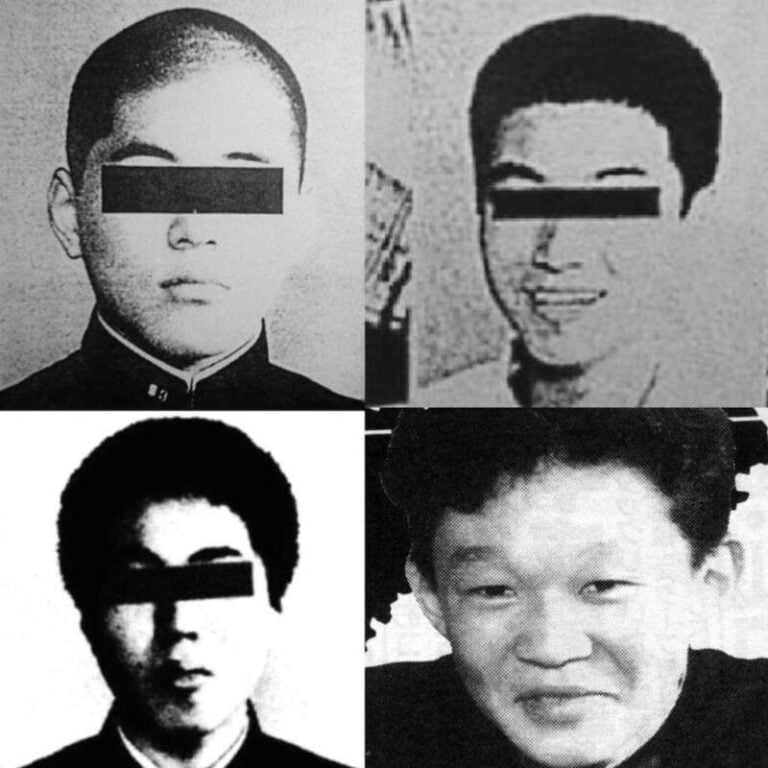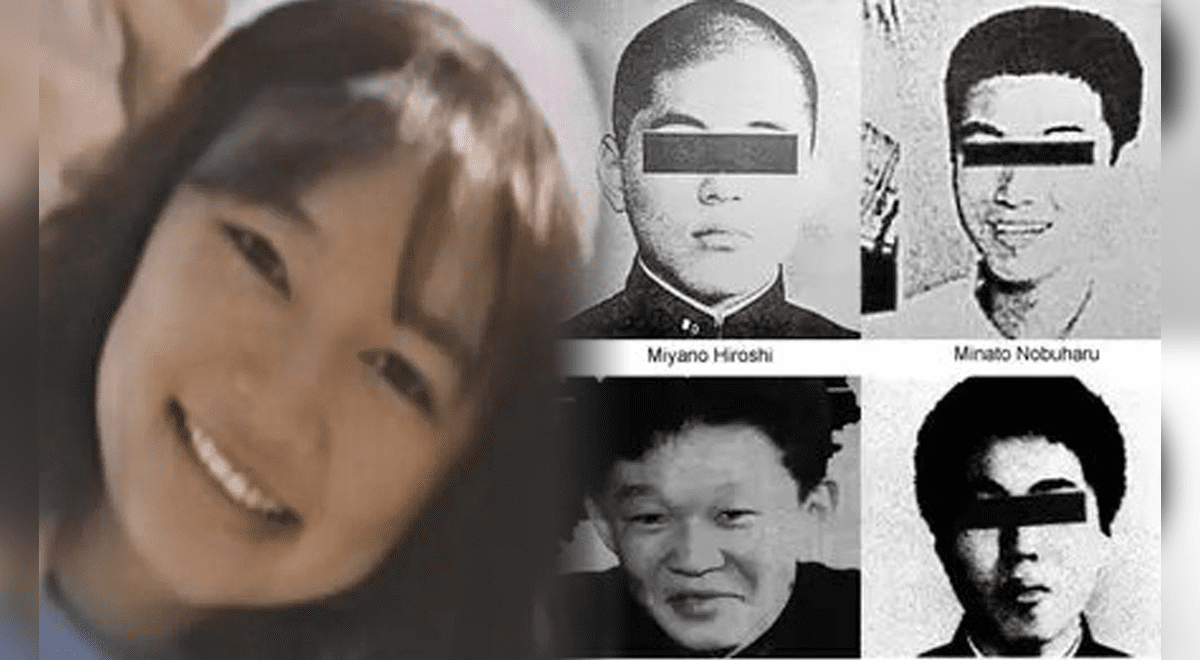Junko Furuta Murder: A Horrific Crime & Unbelievably Lenient Sentences...
Could the agonizing death of Junko Furuta, a young Japanese high school student, have been prevented? The tragic truth is that this horrific ordeal, marked by unimaginable cruelty and lasting for over forty days, could have been stopped, but systemic failures and shocking inaction allowed unspeakable acts to unfold.
In the closing years of the 1980s, in the quiet suburban landscape of Misato, Saitama Prefecture, Japan, a nightmare was unfolding. Junko Furuta, a vibrant seventeen-year-old, found herself ensnared in a web of violence and depravity. Abducted on November 25, 1988, her life was irrevocably altered. For forty long days, until January 4, 1989, she was subjected to relentless torture, sexual assault, and unimaginable abuse. The perpetrators, a group of four male teenagers - Hiroshi Miyano, Shinji Minato, Jo Ogura, and Yasushi Watanabe - inflicted suffering that continues to shock and horrify anyone who learns of it. The details of the abuse are deeply disturbing, painting a picture of escalating brutality that culminated in her murder. The case, known as the Junko Furuta murder, remains one of Japan's most infamous criminal incidents, a stark reminder of the darkest corners of human behavior.
| Full Name: | Junko Furuta |
| Date of Birth: | January 18, 1971 |
| Place of Birth: | Misato, Saitama Prefecture, Japan |
| Age at Time of Death: | 17 |
| Education: | High School Student |
| Family: | Parents, Older Brother, Younger Brother |
| Date of Abduction: | November 25, 1988 |
| Date of Death: | January 4, 1989 |
| Cause of Death: | Murder (Result of prolonged torture and abuse) |
| Location of Crime: | Various locations in Misato, Saitama Prefecture, Japan |
| Perpetrators: | Hiroshi Miyano, Shinji Minato, Jo Ogura, Yasushi Watanabe |
| Trial: | First trial began on July 31, 1989, in Tokyo. |
| Sentencing: | Received surprisingly lenient sentences due to their minor status and alleged remorse. |
| Reference: | Wikipedia: Murder of Junko Furuta |
The brutality Furuta endured is almost impossible to comprehend. The four teenagers, fueled by a depraved sense of power and control, subjected her to a litany of horrors. Her captivity stretched over weeks, during which she was repeatedly raped, beaten, and tortured. The physical and psychological toll was immense, pushing her to the breaking point. The details of her abuse are a testament to the capacity for human cruelty, highlighting the darkest aspects of the human psyche. Her pleas for release were ignored, and her suffering was met with increasing violence. The perpetrators, seemingly unconcerned with the consequences of their actions, continued their horrific campaign of terror.
- Best Ways To Watch Movies Online Your Ultimate Guide
- Movie Mania Telugu Films Movierulz Streaming In 20242025
Following her death, the perpetrators took further steps to conceal their crime. They encased her body in concrete inside a large drum, subsequently disposing of it in a cement truck. This desperate attempt to erase the evidence of their actions speaks to the cold calculation that underscored their brutality, demonstrating the lengths they would go to avoid accountability. This heinous act underscores the depths of their depravity, adding another layer of horror to an already devastating tragedy.
Adding to the tragedy of the case is the fact that the authorities had opportunities to intervene and potentially save Junko's life. Twice, the police were alerted to her condition, but they failed to act decisively. The reasons for this inaction remain a subject of speculation and debate. However, the consequences were devastating, as each missed opportunity allowed the perpetrators to continue their reign of terror. This failure on the part of law enforcement is a significant aspect of the Junko Furuta case, prompting questions about accountability and the protection of vulnerable individuals. The lack of adequate response highlights systemic failures within the system and raises concerns about the effective enforcement of the law.
The investigation that eventually led to the perpetrators' arrest and conviction was initiated by a separate, unrelated case. A swift confession in that case provided the breakthrough that law enforcement officials needed to bring all four kidnappers into custody. This unexpected turn of events underlines the complex nature of the investigation and how justice was eventually achieved. The confession revealed the truth about Junko Furuta's fate and helped bring the perpetrators to justice, albeit after the fact.
- Graciebon Leaks Exposed What You Need To Know Year Update
- Telugu Movies 2025 Watch Online Legally Safely Guide
The trial and prosecution of the perpetrators were a painful process for the community and the victims family. The courtroom proceedings exposed the full extent of the crimes, forcing those involved to relive the horror. Classmates of Furuta, as well as friends and family, had to grapple with the grim reality of her death. The trial, which began on July 31, 1989, in Tokyo, brought to light the devastating details of her captivity and the brutal acts committed against her. The impact of the case resonated far beyond the courtroom, sparking a national conversation about juvenile crime and the need for justice.
Despite the severity of their crimes, the perpetrators received surprisingly lenient sentences. The fact that they were minors at the time of the offenses, along with their alleged expressions of remorse, factored heavily into the court's decisions. This outcome sparked considerable controversy and widespread criticism, as many believed that the punishment did not adequately reflect the brutality of the crimes committed. This legal aspect of the case has been a subject of discussion and debate since the trial ended. Many individuals and groups questioned the equity of the sentencing, which they thought did not equate to the grievous loss of life.
The Junko Furuta case is a stark reminder of the vulnerability of individuals and the importance of protecting those most at risk. It also serves as a cautionary tale about the failures of the system and the tragic consequences of inaction. The story of Junko Furuta has had a significant impact on popular culture, inspiring several movies and a manga illustrated by Kamata Youji. The international outrage sparked by her murder has made her story known globally, shining a light on the need for justice and a safer society. The legacy of her death continues to affect countless people and inspires continuing calls to prevent similar tragedies.
The cases impact extends beyond the immediate participants and the justice system, reaching into various facets of society. The crime has been examined and analyzed in legal, sociological, and psychological fields. The case also led to reform and the need for a greater sensitivity and understanding of the implications of juvenile crime. The long-lasting effects of the tragedy serve as a continual reminder of the importance of vigilance, empathy, and the collective duty to protect the most vulnerable in society.
The brutal nature of the Junko Furuta murder case exposed the darkest corners of human depravity, leaving an indelible mark on Japan and the world. The case serves as a chilling reminder of the potential for evil that can manifest within individuals and the urgent need for preventative actions and swift justice. The tragedy of Junko Furuta will continue to be a symbol of suffering and a call to action for generations.
The legacy of Junko Furuta remains a powerful reminder of the need for constant vigilance against violence and abuse. It serves as a call to action for society to protect the vulnerable, hold perpetrators accountable, and ensure that such horrific events are never repeated. The story of her tragic death has been etched in history, serving as a tragic lesson about the darkest facets of human nature.
The repercussions of this case continue to reverberate, sparking public debate about the role of law enforcement, the fairness of sentencing, and the necessity of protecting the most at-risk members of society. The story of Junko Furuta is a testament to the resilience of the human spirit and a harsh reminder of the catastrophic consequences of unchecked violence. It represents a symbol of lost innocence and the devastating consequences of violence.
- Movierulz 2025 Watch Telugu Movies Online Free Guide Review
- Stream Movies Tv Shows Justwatch Movierulz More

Junko Furuta's Murder And The Sickening Story Behind It

Junko Furuta's Murder And The Sickening Story Behind It

¿Qué pasó con el crimen contra Junko Furuta, el caso que indignó a todo